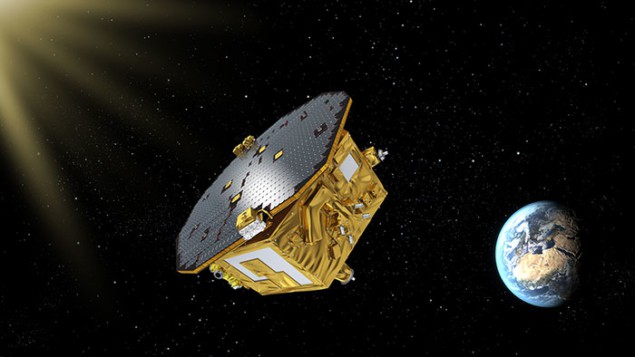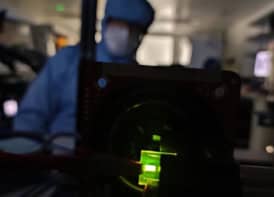Flash Physics is our daily pick of the latest need-to-know developments from the global physics community selected by Physics World‘s team of editors and reporters

LISA Pathfinder overcomes electrostatic forces
Researchers have successfully minimized the electrostatic forces affecting test masses on the LISA Pathfinder spacecraft. The LISA Pathfinder mission aims to demonstrate technology for the Laser Interferometer Space Antenna (LISA) – a space-based gravitational-wave observatory that will comprise three spacecraft. As part of a huge detector, each spacecraft will contain test masses located at a “Lagrangian point” between the Sun and Earth. It is important that the masses are completely isolated from any external influences because LISA will use lasers to very precisely measure the distances between them. Any passing gravitational waves will then be detected as they cause tiny displacements of the masses. In June 2016, the European Space Agency (ESA) announced that a 2 kg test mass had been successfully isolated within the shell-like spacecraft of LISA Pathfinder. A second mass, located 33 cm away, monitors the test-mass motion and the spacecraft uses thrusters to make sure that the test mass does not bang into the wall of its surrounding shell. Now, researchers have developed methods to reduce the charge-induced electrostatic forces exerted on the test masses. These forces originate from high-energy cosmic rays and solar energetic particles penetrating the spacecraft and shielding, depositing charge on the test mass via secondary emission or by stopping directly. The methods and technology, presented in Physical Review Letters, overcome a major milestone in the development of LISA and the next generation of gravitational-wave experiments.
Nanodiamonds enhance magnetic resonance imaging

A new technique using tiny diamonds and magnetic resonance imaging (MRI) could ensure that cancer drugs and other pharmaceuticals reach the right parts of the body. That’s the claim of a team of researchers including David Waddington at the University of Sydney in Australia and Matthew Rosen and Ronald Walsworth of Harvard University in the US. The group used the “Overhauser effect” to boost the MRI signal from pieces of diamond just 18 nm in size. This involves firing radio-frequency pulses at nanodiamonds mixed with water. This causes the transfer of electron spin polarization from impurities on the surface of the diamond to the nuclear spins of hydrogen in surrounding water molecules. This greatly enhances the MRI signal from the hydrogen nuclei, which should reveal the location of nanodiamonds as they move through the body. A cancer drug could be tagged with nanodiamonds, for example, and then MRI could be used to confirm that it reaches a tumour. Other applications include studying how drugs are transported across the blood–brain barrier and also detecting cancer by using nanodiamonds to tag a pharmaceutical that tends to accumulate in specific types of tumour. Unlike conventional MRI scans, which require strong magnetic fields created by expensive room-sized superconducting magnets, the new technique employs low magnetic fields. This, says Rosen, “opens up a number of new opportunities” beyond the current nanodiamond imaging application. The research is described in Nature Communications.
Quantum-computing pioneer bags mathematical-physics prize

Raymond Laflamme has won the 2017 CAP-CRM Prize for Theoretical and Mathematical Physics, “for his groundbreaking contributions on quantum information”. Awarded jointly by the Canadian Association of Physicists (CAP) and Canada’s Centre de Recherches Mathématiques, the prize will be presented on 1 June at a ceremony at CAP’s annual congress in Kingston, Ontario. Laflamme began his career in cosmology, completing a PhD in 1988 with Stephen Hawking at the University of Cambridge. In the mid-1990s he shifted his attention to quantum information and helped develop linear optical quantum computing and other important concepts of quantum-information processing. In 2001 Laflamme joined the University of Waterloo as the founding director of the Institute for Quantum Computing (IQC). He is also a founding member of the Perimeter Institute for Theoretical Physics in Waterloo, Ontario, where Laflamme co-founded the quantum-technology company Universal Quantum Devices in 2011.
- You can find all our daily Flash Physics posts in the website’s news section, as well as on Twitter and Facebook using #FlashPhysics. Tune in to physicsworld.com later today to read today’s extensive news story on the latest in the search for neutrinoless double beta decay.



